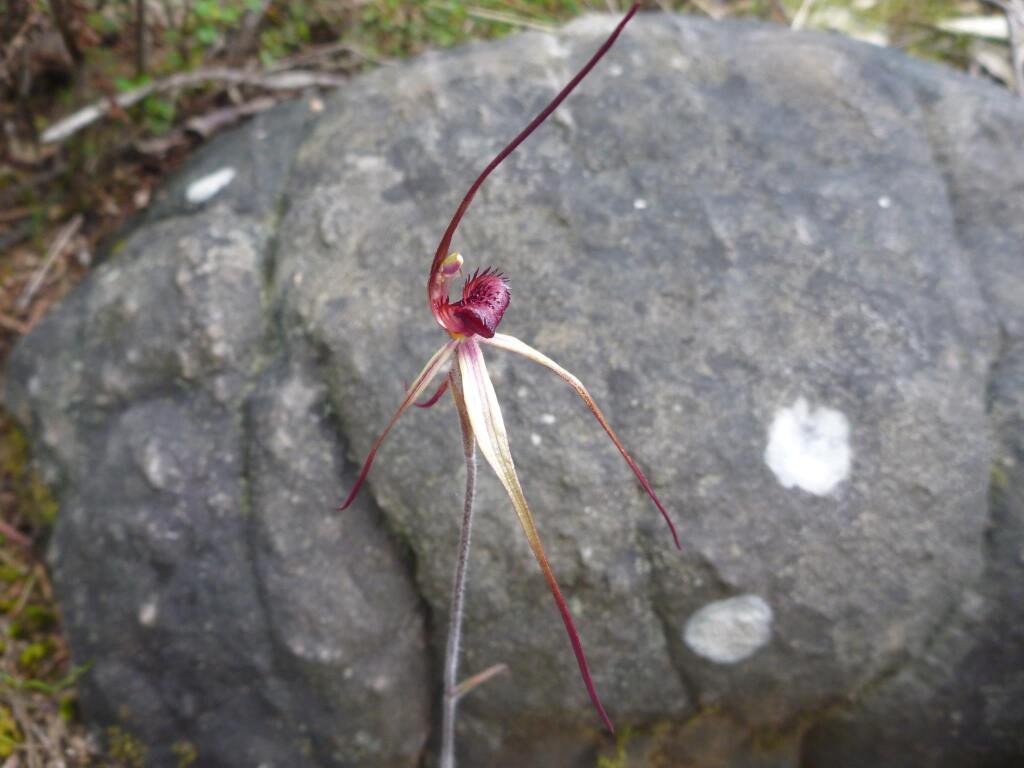Caladenia grampiana
(D.L.Jones) G.N.Backh.Flowering plant 15–26 cm tall. Leaf 5–10 cm long, 5–8 mm wide, reddish at base. Flowers 1 or 2, fragrance resembling hot metal or plastic; perianth segments 3.2–5.5 cm long, pale tawny yellow or pinkish, sometimes suffused with light brown; lateral sepals and petals drooping; sepals flattened at base, 2.5–4 mm wide, distal half to two-thirds with ellipsoid cells in chains of 2–3; petals shorter than sepals but otherwise similar. Labellum curved forward with apex recurved and lateral lobes erect, lamina ovate-lanceolate, obscurely 3-lobed, 13–17 mm long and 7–9 mm wide (when flattened), cream to red, often with darker reddish lines; margins of lateral lobes fringed with reddish linear calli mostly 1–2 mm long, margins of mid-lobe with shorter calli becoming asymmetric and merging near tip; lamina calli in 4 or 6 rows, extending neasrly to base of mid-lobe, narrow, linear to foot-shaped, c. 1.5 mm long at base of lamina, decreasing in size towards apex. Flowers Aug.–Sep.
Wim, Gold, GGr, DunT. Endemic to Victoria where known only from heathy open forests in the Grampians on well-drained gravelly soil and laterite.
This species has been confused with Caladenia oenochila, but is distinguished by its thinner sepaline caudae, thinner labellum calli and narrower column.
Caladenia versicolor differs from C. grampiana in having more colourful flowers with stiffly spreading perianth segments and a later flowering time.
 Spinning
Spinning
